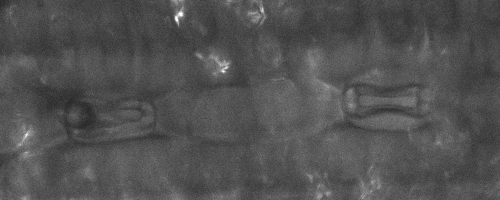Evolution of stomatal movements
Plants have a innate immune system that can identify a large range of pathogenic microorganisms. The fungal cell wall contains chitin, in contrast to the cellulose found in the wall of plants. Based on the chemical difference in cell wall composition, plants detect the presence of fungi with receptors that recognize chitin fragments. Among the earliest responses that are initiated upon recognition of chitin, are changes in the ion fluxes in plant cells. Previously, we could show that pathogenic mildew fungi are activating anion channels in guard cells of barley, which causes the closure of stomatal pores (Koers et al. 2011). Stomatal closure can also be provoked, by the infusion of chitosan (which act in a similar way as chitin) into leaves (see figure below).
In a recent project, we compare the ion fluxes that are provoked by chitosan and part of a protein (the flg22 peptide) that originates from the pathogenic bacterium Pseudomonas syringae. This comparison is aimed to identify differences in early defense responses to fungi and bacteria. The outcome of this project may reveal differences in will immune response to fungi and bacteria that can help to obtain plants with an enhanced resistance to pathogens.









